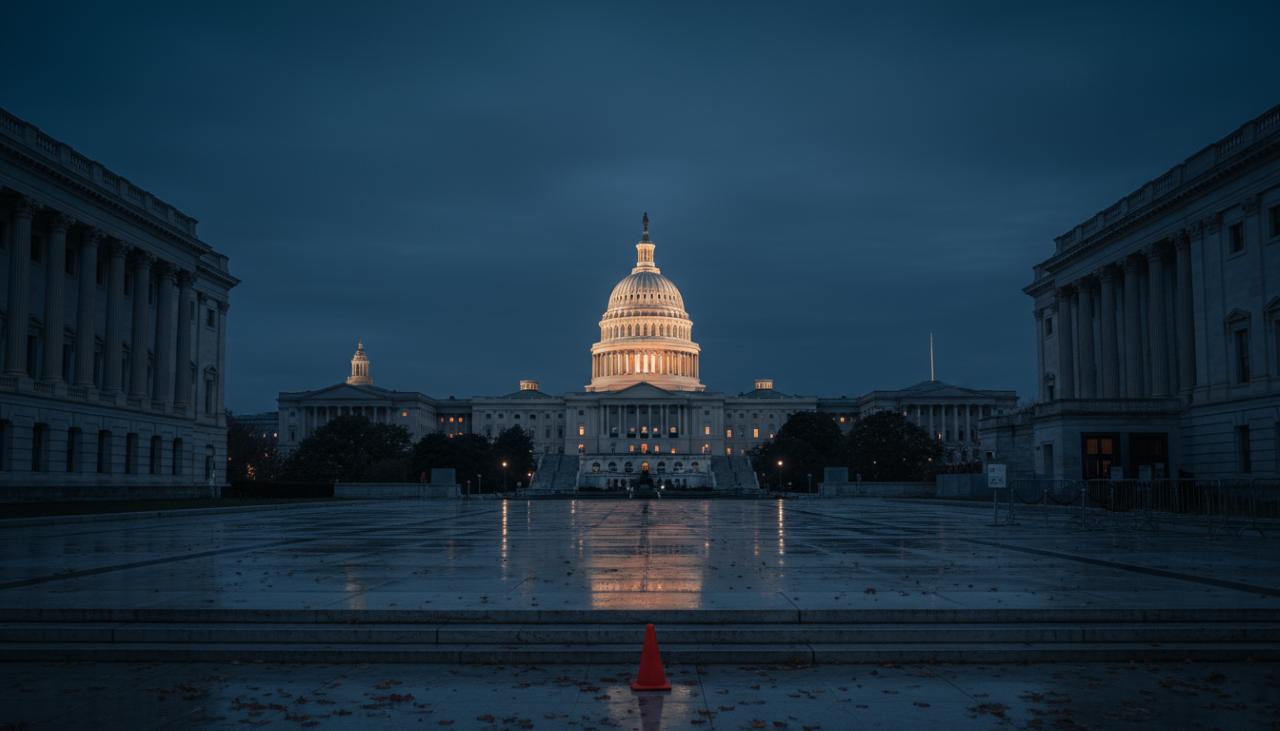
The longest government shutdown in U.S. history may finally be nearing its end. Yes the Dems finally caved (naturally). On Sunday night, the Senate cleared a key procedural hurdle with exactly 60 votes on a compromise package to reopen the government and reverse White House–ordered layoffs.
But the deal postpones the central dispute that caused the shutdown in the first place: whether to extend Affordable Care Act premium subsidies that keep millions of Americans’ health insurance affordable. The House still has to act, and the White House still has to sign off. The finish line is close, but not yet crossed.
Where The Deal Stands Now
The Senate advanced a hybrid plan that combines an updated continuing resolution with a narrow “minibus” spending package. It would restore funding through January 30, 2026, guarantee back pay for furloughed workers, and halt further federal layoffs. Eight Democrats joined Republicans to reach the 60-vote threshold. That opened the path to final passage later this week, but the House must still approve it before the government can actually reopen.
What the deal doesn’t include is what caused the fight: an extension of the enhanced ACA tax credits set to expire at year’s end. Instead, Senate Republicans promised to hold a December vote on the issue once the government is reopened, though House conservatives already say they won’t bring it to the floor. This omission means millions of Americans could face premium hikes of more than 20 percent if the credits lapse—a political and financial time bomb for both parties.
The shutdown began on October 1 when funding expired, leaving around 900,000 federal workers furloughed and nearly 2 million working without pay. It has now stretched over 40 days, making it the longest in U.S. history.
The Human And Economic Toll
Behind the procedural chessboard are very real consequences. The Trump administration paused nutrition assistance payments on November 1, cutting off food aid to families who depend on the Supplemental Nutrition Assistance Program. The airports have been a symbol of the strain: short-staffed air traffic controllers leading to mass delays and cancellations, one of the most visible signs of federal dysfunction.
Around the country, payless paydays have sent federal families to food banks. National museums, parks, and monuments are shuttered. Contractors have been left out entirely, with no promise of back pay. Economists estimate each week of the shutdown has shaved roughly 0.1 to 0.2 percentage points from national growth—about $15 billion a week in lost economic output that small businesses and local communities will never fully recoup.
The shutdown has turned the concept of government service into an exercise in exhaustion. Programs that millions rely on, such as WIC and housing loans, have stalled. Key federal permit approvals and data releases are frozen. What used to be considered basic governance has become hostage-taking at scale.
Health Care Is The Ballgame
It is tempting to see reopening the government as victory. It isn’t. Democrats made the ACA subsidies their core demand, arguing that without them, the middle-class families who hover above Medicaid eligibility lines would face crushing health costs. Eight Democratic senators broke ranks to advance the deal, saying that reopening first and negotiating later was the responsible route. But others warned that giving up leverage now would almost guarantee Republicans won’t return to the negotiating table in December.
The ACA’s enhanced subsidies are the difference between maintained coverage and millions falling off their plans. If they expire at the end of 2025, the political fallout will be ferocious. Democrats argue that the shutdown was, at its core, a fight over whether affordable coverage is a right or a bargaining chip. Reopening without securing those credits might end the symptoms but not the disease.
Institutions Under Strain
This shutdown didn’t happen by accident; it was part of a larger vision. The White House signaled early comfort with a prolonged standoff and even attempted to permanently dismiss “non-essential” employees during it, a move later blocked in court. The approach weaponized the shutdown to shrink government by attrition, weakening everything from air safety to food inspections.
The more Congress trades routine budgeting for crisis management, the easier it becomes to normalize dysfunction. Stopgaps replace full-year budgets. Critical programs like the ACA and SNAP become bargaining chips. The slow erosion of capacity undermines public faith in the very idea that government can function.
What To Watch Next
The House is the next battleground. Speaker Mike Johnson has kept members out of session for weeks, trying to pressure Senate Democrats into concessions. Now, he faces his own internal fractures between hardline conservatives who favor continued cuts and pragmatic members who just want the government open again. A messy floor fight is inevitable.
The Senate’s promise of a December vote on ACA subsidies will be crucial. If Republicans honor it, they can claim a middle ground between austerity and stability. If not, Democrats are likely to use public frustration—and health care costs—as a cudgel heading into 2026.
The most immediate political pressure, however, may come from the public, not the Capitol. Air travel disruptions, delayed federal paychecks, and suspended food aid are testing patience across both red and blue states. The longer these effects drag on, the harder it becomes for the GOP-controlled Congress to defend the stalemate.
In recent days, some media outlets, including The Guardian, reported growing signs that even Republican senators recognize the risks of pushing further into the holiday season. The combination of holiday travel chaos and empty refrigerators is not a winning message.
The Bottom Line
The government may be about to reopen, but the fight over health care—and the moral definition of governing in America—remains unresolved. Reopening is not success by itself; it’s a minimum act of responsibility. The next question is whether Congress will protect millions from higher premiums or just reopen the government long enough to stage the next crisis.
